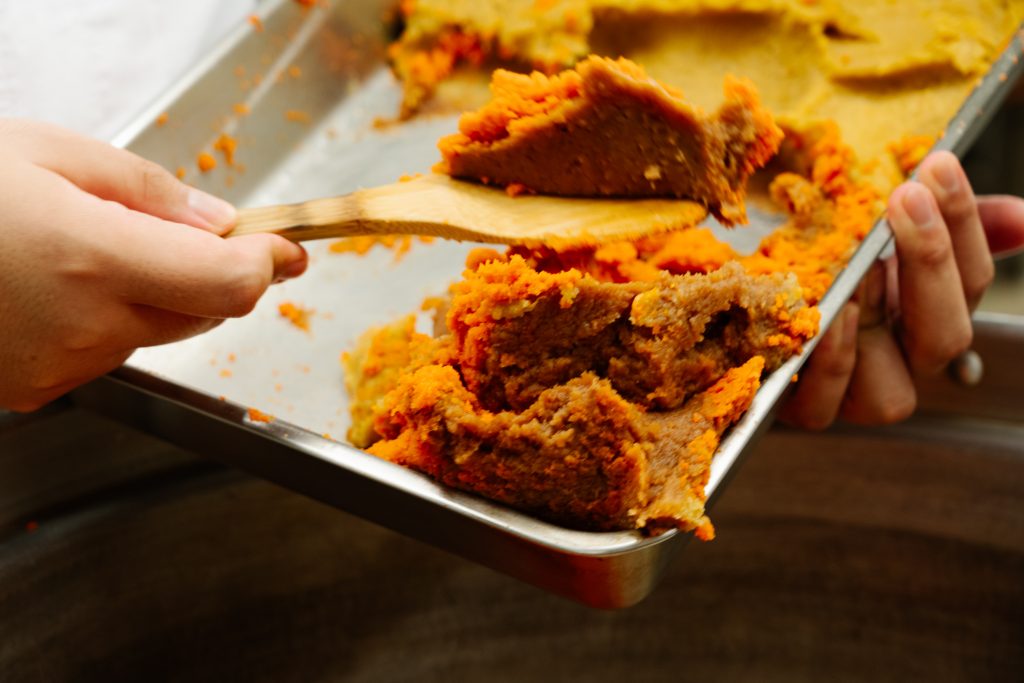Daigo, a long-established vegetarian restaurant with a history going back some 70 years, sits in a prime location in Atago, Tokyo. Awarded 2 Michelin stars for 10 consecutive years, they’ve released a “Fruit and Spice Fragrant Vegan Curry” containing no animal ingredients, chemical seasonings, preservatives, refined sugar, or flour. Yusuke Nomura, the fourth-generation owner of Daigo, calls this retort curry pouches “Vegetable Keema.”

For their vegetarian cuisine, which is based on Buddhist precepts, curry is a dish that isn’t usually considered part of the menu. In fact, the person who taught Nomura the basics of curry making was an older colleague of his who had trained in French cuisine for about four years. Nomura used the recipe he acquired at that time as a foundation and incorporated the concept of “subtraction,” which is the basis of his vegetarian and Japanese cuisine. If you feel the taste is lacking, analyze the elements that cancel each other out and thin them out. He has been making these such improvements for more than 10 years in an effort to refine the flavor of his recipes.
“I started making this curry as a snack at Daigo, and we went on to open stalls at the Michelin Guide Food Festival and the Atago Shrine’s Dese no Ishidan Festival. Every time, there was a huge response on social media asking if Daigo did curry too. So we tried offering curry at a reservation-only event for about 15 people, but ended up receiving 8,000 applications. I had this feeling that curry had an untapped potential in the world of vegetarian cuisine.”
A typical retort curry pouch holds about 25 percent actual food ingredients, but “Fruit and Spice Vegan Curry” contains about 70 percent. Since almost all of the ingredients are vegetables, Nomura describes it as a “vegetable keema curry.”
“It may look like there are no ingredients, but instead of just water, apples, onions, and carrots are crushed and dissolved in a blender, and then spices are added and simmered. It’s like dissolving a roux in vegetable juice. This is fundamentally different from the existing way of making curry, where the ingredients are fried to make a broth and then the spices are added.”
“Our goal was to create a curry with a fruity aroma and a slightly sweet mouthfeel.” The curry’s spice builds gradually and warms the body. Cinnamon was chosen as the main spice because it goes well with the apples, which are a main ingredient, and it also grows the complexity over time. Ginger, which brings about a pleasant perspiration effect as you eat, was added in quantities four to five times more than usual. As we asked about the composition of the flavors, we gained insight into Nomura’s ideal curry.
“For example, I like soy sauce ramen but I can’t clearly recall the specifics of the taste of the ramen at my favorite restaurant. I do remember that it tasted good. There is a difference between feeling something is delicious and remembering its taste. In my mind, curry should be such a thing. My hope is that this curry will become a familiar presence that people will want to experience again.”








